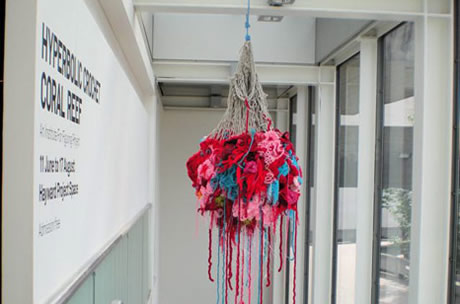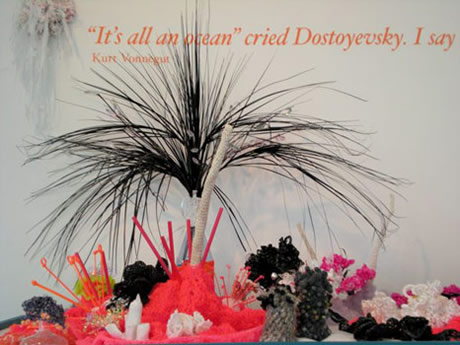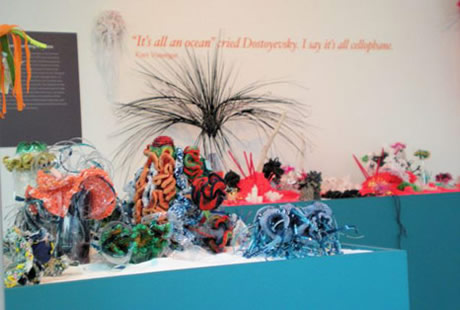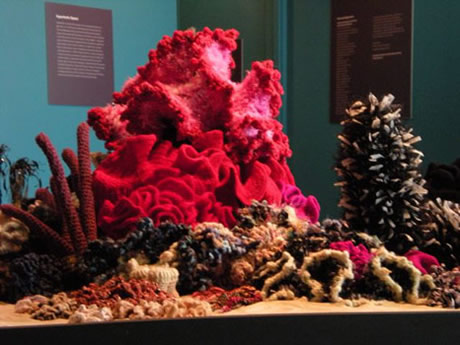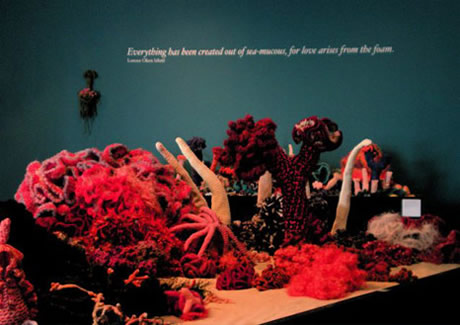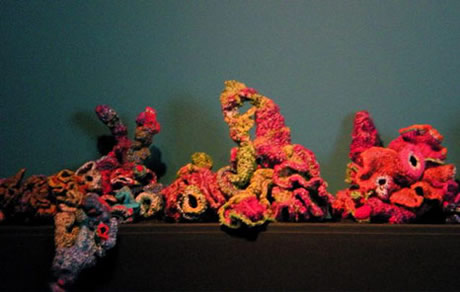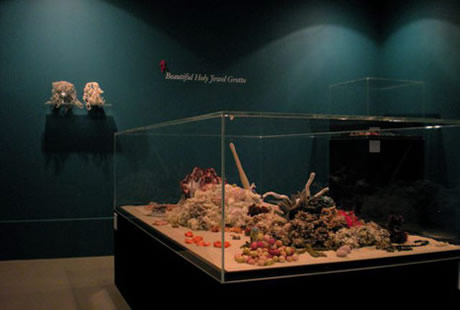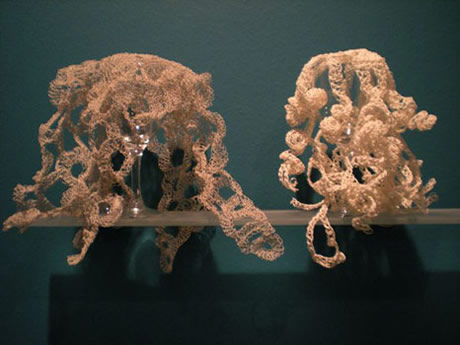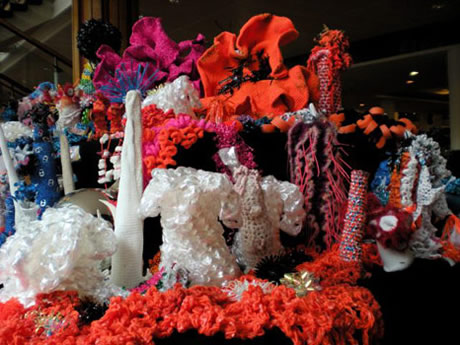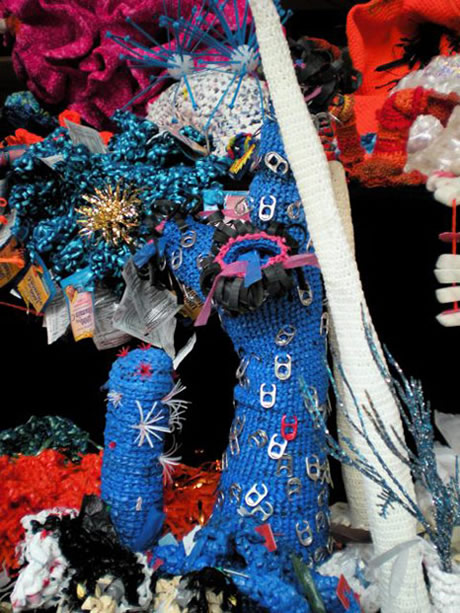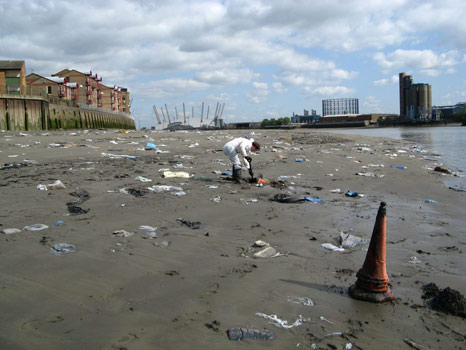Archival page – still under construction
The Hyperbolic Crochet Coral Reef exhibition opened at The Hayward Project Space on June 11th, 2008.
The exhibition included an expanded version of the Bleached Reef, a new configuration of the Ladies Silurian Reef, the beautifully archaic Branched Anemone Garden, and the ever-growing Toxic Reef (on view in the foyer of Royal Festival Hall). On show for the first time was the wondrously surreal Chicago Cambrian Reef (curated by IFF contributor Aviva Alter), plus a new formation of the Beaded Reef by master beaders Rebecca Peapples and Sue Von Ohlsen. The exhibition also debuted several new plastic installations: The Exploding Plastic Inevitable Reef (with hot-pink sand by Kathleen Greco), and the Bottle Tree Grove (featuring works by Christine Wertheim, Evelyn Hardin and Nadia Severns). Hanging elements in the show included the all-plastic-bag Rubbish Vortex by Australian contributor Helle Jorgensen, a flotilla of jellyfish by Irish crafter Inga Hamilton, and Dr Axt’s psychedelic coral-cloud “Reefer Madness.”
In addition to the IFF reefs, the exhibition debuted the amazing new UK Reef, constructed by crafters across the UK (with contributions from Ireland, and even Australia—hey it’s a former colony). The UK Reef was unique in its structure, for in this instance all the crochet pieces are attached to giant “reef balls” that simulate the actual concrete reef balls used to help regenerate devastated reefs. This marvelous innovation was dreamed up by Cathy Woolley of the Hayward Gallery, who worked with local London sculptors to realize the vision.
On Friday, June 13, 2008 the Southbank center hosted an all-day symposium inspired by the Crochet Reef Project. The Art and Craft of Saving the World invited speakers such as crochet reef creators Margaret and Christine Wertheim; mathematician Dr Daina Taimina, inventor of hyperbolic crochet; radical UK crafters, environmentalists, and coral reef biologists.
Exhibition Press Coverage
The exhibition received excellent press, including features in The Guardian, The Times, New Scientist and Craft Magazine.
The Guardian
New Scientist
Partnership with Thames21
One of the core goals of the IFF Crochet Reef project is to draw attention to the tsunami of plastic trash that is flooding into our oceans. From the beginning, the Hayward team have embraced this goal and sought to bring it into prominence within the exhibition. We are delighted to have the partnership here of the environmental organization Thames21, whose mission is to help clean up the banks of the Thames, which (along with river-ways everywhere) is being inundated with trash. In March, Thames21 director Chris Coode escorted the exhibition team on a mile-long expedition along the Thames bank to collect plastic bags. The bags were cleaned and brought to the Hyperbolic Crochet workshop at the Southbank Center on the weekend of March 16 and 17, 2008. Thames21 has agreed to provide a supply of genuine grubbed-up-from-the-Thames plastic bags for production of UK Reef forms. We are delighted to announce that while not everyone is willing to crochet used plastic bags, a number of the workshop participants embraced the idea. Indeed, several had come with their own plastic bags, including bright orange Sainsbury’s and Okada bags, which happen to be the exact colour featured in the Toxic Reef. We are especially eager to have UK Reef contributions in plastic, and we encourage all participants to think about using their own plastic discards in their reef forms.
More information about Thames21 and their clean-up work here.
The Hyperbolic Crochet Coral Reef exhibition at the Hayward Gallery is generously supported by the Crafts Council, with additional assistance from the Norton Family Foundation and George Loudon. The symposium was generously supported by a grant from the Crafts Council.
The Crochet Reef has been produced with support from the Annenberg Foundation, the Andy Warhol Foundation for the Visual Arts, the Norton Family Foundation, and Daniel and Joanna Rose Foundation.
Special thanks to Ralph Rugoff and Clare West. Production on the UK Reef was managed for the Crafts Council by Katy Bevan, and for the Hayward Gallery by Becca Connock and Cathy Woolley.
